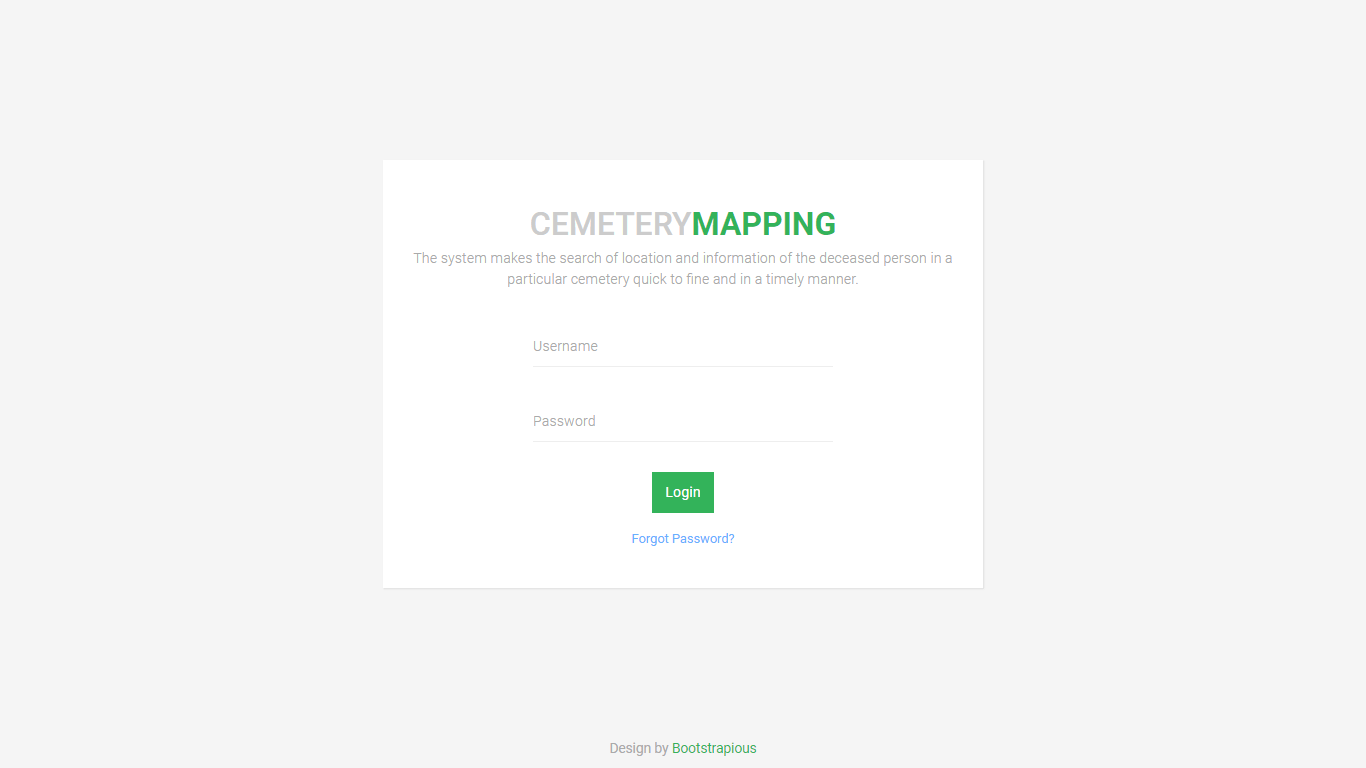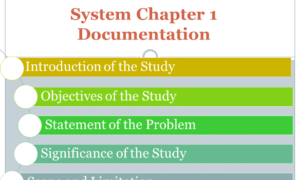Cemetery Mapping Information System
Proposed system
The researcher of the system entitled “Cemetery Mapping Information System” aimed to provide a platform for the user to quickly locate and less effort on finding their relative graves and a platform for the personnel to access, update and maintain the data in an efficient manner. With this system, the user will not be worry about locating the grave of their deceased loved ones. The information about the deceased person in that particular cemetery will be all stored in this system, the user and the personnel will simply type the deceased name of the person and then the information about that person will pop up in screen, the location and other information about, the system makes personnel and user experience hassle free.
With the current system, manually they locate, search and record the information and location of the deceased person which is really time consuming and takes a lot of effort in order the work to be done. But researchers made some improvement that the current system missed out. They recreate it to be easier, efficient and hassle free system.

The proposed system makes the search of location and information of the deceased person in a particular cemetery quick to find and in a timely manner. The system allows the user to access the map of the cemetery and other information about their deceased relatives. They can visualize the map, locate their graves, and search for the deceased person. Addition to this, the personnel as well can access and update the information for the convenient of the users.
System implementation
The proposed system which is the cemetery mapping and information system was presented for the end user, for them to find their deceased relatives in an easy and worry free. A representative in the group of researchers provided questionnaires to answers the questions, clarification and difficulties that would possibly arise upon operating the proposed system.
To stow the gap that the current system miss out to present the system was developed. This is for the hassle and burden that the current system brings. The proposed system makes it easy, better and efficient.
Objectives of the study
- On the main goal of this study is to help end user to locate the grave of their deceased relatives without having physical map.
- Next objective is to develop a system determine all the information about the deceased persons.
- Third will be, to give solutions of the problem that current system facing.
- To make end user and personnel perform their task or finding will be easy and not that complicated.
- Last will be, to create a system that will makes the performance of the organization fine, satisfaction and excellent.
Significance of the study
The personnel, the users and the proponents will benefit from this system
Personnel: having this system, will makes the customer or users satisfaction in an excellent level and allowing them to access and perform on their own will improve customer service. This will make them less hassle especially contacting person one by one, and they will not have a hard on recording all the information manually.
User: Users will not have a hard time on looking for their relatives graves because the system provided them the map, stating all the location of the graves. Also this system will help them know if the dead body has been removed or not. They can monitor the grave of their deceased relative even if they are not there physically.
Proponents: if this study will be implemented then the proponents of the system will gain benefits. Because they will enhance more their knowledge and understanding about their studies.

Project Plan/SDLC Model
As operating the system, the researchers used the software development cycle (SDLC), the overall process that consists of sic cycles.
First is to determine the requirement. In this cycle the researcher determine whether its software or hardware will be used for the proposed system.
Second is to gather data: this is where the researcher conducts an interview to the management office to gather data that could help for the operation of the system.
Third step is to analyse the data. In this cycle the researcher will analysed all the data they gathered, for them to identify the necessary information needed for the development of the proposed system and also to give solutions.
Next will be the phase designing. The researcher will design the system that is related to the future. The specification and operation will detail and some conceptual model of the user requirements will be produced.
The last cycle will be the coding. The researcher will encode all the codes with the hand of the technical expert to check if it has error or the program will debug successfully. The project undergoes some testing to determine if the data is reliable. Maintaining the system is also part of it and also to give solutions.
You may visit our Facebook page for more information, inquiries, and comments. Please subscribe also to our YouTube Channel to receive free capstone projects resources and computer programming tutorials.
Hire our team to do the project.


